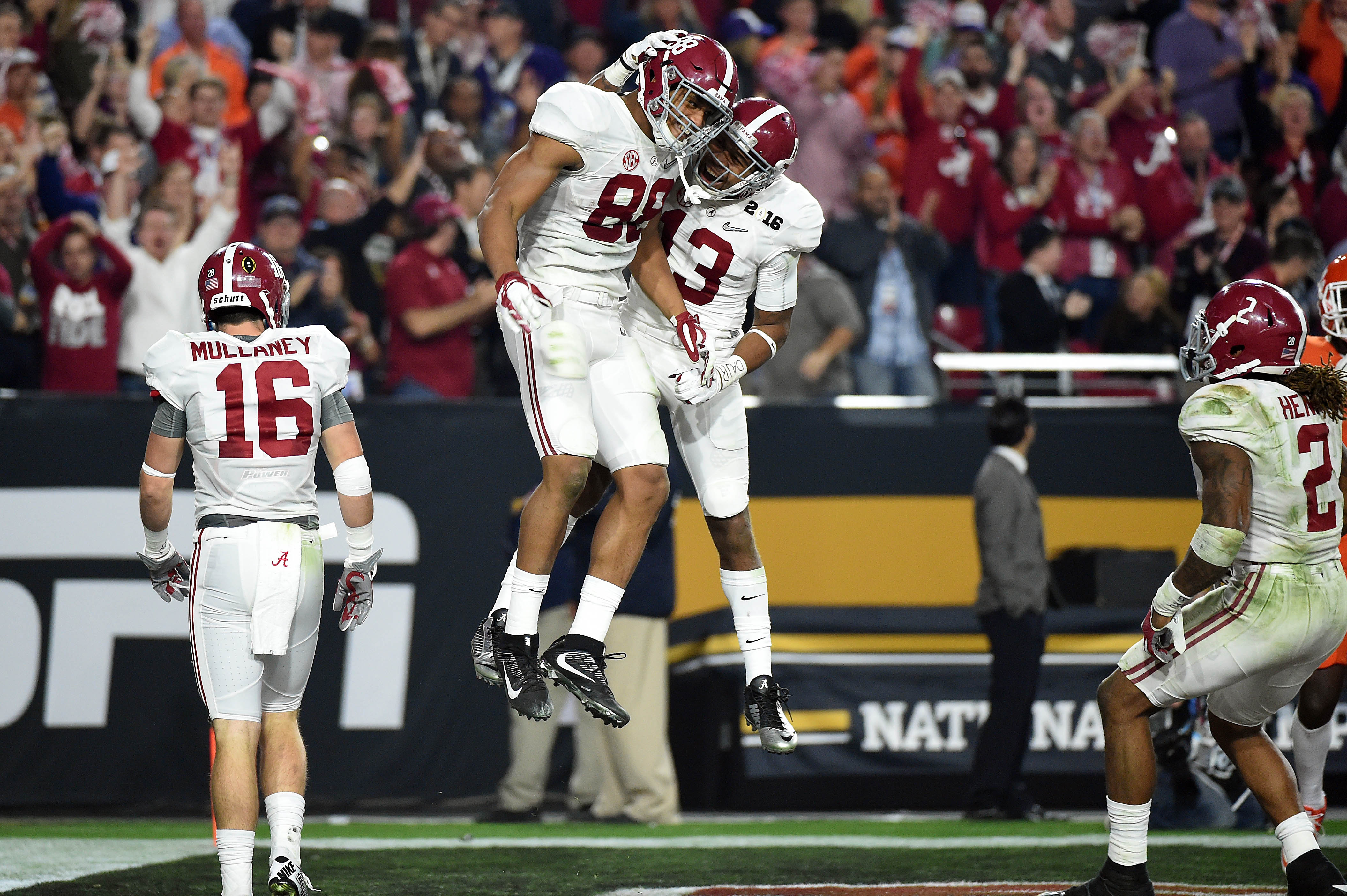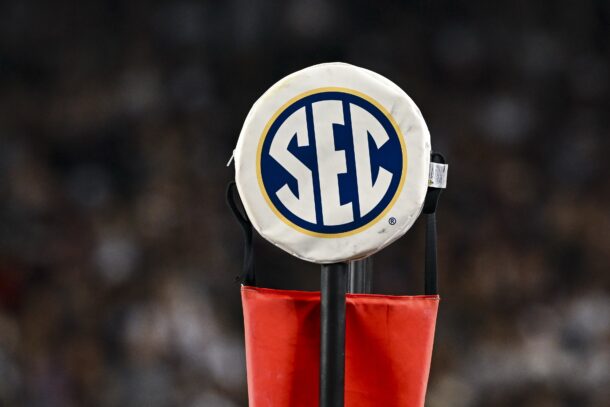
The stereotypical SEC slugfests, the ones with the brutal array of jarring hits, barely any open field to breathe and barely any points on the scoreboard, well, they’ve taken quite a hit themselves recently.
Those 9-6 final scores so familiar with proud SEC fans are becoming a thing of the past. While some of the most ferocious defenses with some of the best pro prospects still reside in the Southeastern Conference, offense steadily has been on the uptick.
One big reason for the sudden shift? Spread offenses.
“In this league, it’s so difficult to just line up and say, ‘We’re going to block these guys and run the ball,'” Ole Miss coach Hugh Freeze told the Associated Press last fall. “The spread gives you some smoke and mirrors and some ways to maybe neutralize some of the talent we face on the defensive side of the ball. I think there’s some evidence out there now that other (coaches) are starting to feel the same way.”
As Kurt Voigt of The Associated Press wrote: “From Auburn to Kentucky to Mississippi, with a dash of Alabama and others in between, the spread has become more than just a way of life for some coaches.
“It’s the ultimate tool to counter the defensive talent so abundant in the SEC.”
But, of course, it’s not the only reason offenses have been able to carve out a slightly bigger plot of land against those insanely fast SEC defenses.
“A combination of losing a ton of defensive talent to the NFL Draft after last season is a huge reason for the lack of defense in the SEC,” Patrick Tutka of Sidelines Analyst wrote two years ago. “Also, the improved quality of the quarterback play and the growing sophistication of the offensive play-calling approach also has contributed to defenses having problems.”
Tutka mentioned an actual 9-6 final score, from LSU’s overtime victory over Alabama in Tuscaloosa, which was the defensive prelude to Bama’s 21-0 payback win a few months later in the 2012 BCS national championship game. That was the old, defense-dominated SEC at work, and nobody thought it would change anytime soon.
But it has, at least for now.
Scoring increases nationally
The national numbers from the 2015 offensive frenzy are in, and Dennis Dodd of CBSSports.com reported the damage: The national scoring average increased to a record 29.65 points per team in 2015, according to official numbers compiled by the NCAA for CBS Sports. It shattered the previous record of 29.5 points set way, way back in … 2012.
And while scoring in the SEC was down by more than three points per team last season, in part because of so many quarterback issues, the average was still a robust 28.39 points per team, or about two 9-6 games combined.
Six SEC teams averaged more than 32.5 points. In 2008, only national champion Florida managed that.
Ole Miss won the SEC scoring title at 40.8 points per game, the fourth consecutive year the league leader averaged more than 40.
Alabama averaged 35.1 points, more than its 2009 or 2011 championship teams.
Brand new times, very gaudy numbers. Even in the South.
“More indicators the offensive revolution continues to thrive in college football,” Dodd wrote.
While defense is still vital to winning in the SEC, never mind winning a national title, just look at the team that did (once again) win it all in 2015. In its championship victory over Clemson, Alabama gave up an astounding 40 points — matching the combined points Bama allowed in its previous five games.
The Tide had to score 41 to win another title. It put up 45. Did anyone ever think Alabama would play in the highest-scoring national title game in FBS history? Or that any SEC school would? But that’s what happened.
So Bama scored three more points in one pulsating 24-point fourth quarter of its 2015 title-game victory than it scored in a full 60 minutes of its lumbering, methodical championship win just four years earlier.
Go back to the 2014 season and the first College Football Playoff semifinals, a night Alabama fans would like to forget against eventual national champion Ohio State. On an evening when a loose Tide defense allowed a staggering 42 points, Alabama was able to stay in it until the end only because it put up 35.
It was another not-so-subtle sign of the SEC not necessarily becoming the football-on-skates Big 12, but shifting with each passing season to a conference where high-octane offense isn’t so frowned upon.
If you want to point to one game last season where a Big 12 game broke out in an SEC stadium, again symbolizing a more wide-open, wild-and-crazy SEC, there was Arkansas and Ole Miss on Nov. 7 in Oxford. The Hogs outlasted the Rebels 53-52 in overtime before a stunned home crowd that thought victory was secured on multiple occasions.
There were two telling and contrasting fan comments underneath the game story from that day on ESPN.com. One of them read: “Looks like a Big XII score.” The other: “Best SEC game by far this year.”
So while all of this scoring and craziness might take some getting used to, there is the element now of college football’s dominant conference being able to entertain in a different fashion.
Dual threats lead the way
The frenzied, maniacal brilliance of former Texas A&M quarterback Johnny Manziel was something so unlike what the SEC had been about. He was an “outsider” type of player from a school that had just entered the SEC in 2012 from that wild Big 12. Suddenly, those stout SEC defenses had to devise a plan to slow down the diminutive, daring Manziel, who was quicker and more carefree than Tim Tebow or Cam Newton.
They were mostly unsuccessful, including mighty Alabama, which lost to Manziel and the Aggies at home in 2012 in a game that arguably launched the legend of Johnny Football. Manziel walked into Tuscaloosa against the defending national champions and ran circles around the Tide. This was something rarely done to Alabama, or in the SEC as a whole.
“Manziel passed for 253 yards and rushed for 92, confounding the Tide defense with his ability to keep plays alive as the Aggies scored the game’s first 20 points,” the AP wrote on a landmark day, when the way the SEC was viewed probably shifted ever so slightly.
Manziel drove the Tide crazy the following fall in College Station, too, throwing for 464 yards and five touchdowns and running for another 98 yards. His 562 total yards are the most an SEC player has gained against an SEC team.
Alabama prevailed, but it took 49 points to do it. The Aggies scored 42. Another watershed day: 91 points in an SEC game.
Florida’s Tebow was another recent SEC game-changer, larger than life off the field, large numbers on it. So was Auburn’s Newton, who like Tebow won a national title in college by creating havoc, and big-time offense.
Stories unheard of just a few short years ago have been written: Can Ole Miss win the SEC as a finesse spread team? And: Speed vs. power offense; the SEC debate rages on.
What can’t be debated are the staggering offensive totals of today. The numbers are the numbers. Which means those 9-6 SEC specials might become football dinosaurs sooner than you think.
Cory Nightingale, a sports copy editor at the Miami Herald, lives for Saturdays. He especially enjoys the pageantry, tradition and history of SEC football.







